The number of migrants fleeing into Europe this year has already reached 235,000, topping the total number of migrants for all of last year, 219,000. The International Organization for Migration estimated that number will grow to at least a quarter of a million by the end of August. Nearly half of these refugees are Syrians fleeing war at home, escaping into Turkey, and paying smugglers to help them make a dangerous crossing to the Greek island of Kos in tiny inflatable rafts. Once on European soil, they make their way north any way they can, on foot or by rail, with help or on their own, passing through Macedonia, Serbia, and Hungary bound for Austria, Germany, France, England, and other Western European countries. The influx of migrants is placing huge burdens on all nations along the route, especially Greece, which has seen a 750-percent increase in arrivals over the same period as last year.
 A dinghy overcrowded with Syrian refugees drifts in the Aegean sea between Turkey and Greece after its motor broke down off the Greek island of Kos on August 11, 2015. The Turkey-Greece route for migrants fleeing into Europe has resurfaced these summer months as a thriving business for smugglers profiting from the stream of people fleeing war and poverty.Yannis Behrakis / Reuters
A dinghy overcrowded with Syrian refugees drifts in the Aegean sea between Turkey and Greece after its motor broke down off the Greek island of Kos on August 11, 2015. The Turkey-Greece route for migrants fleeing into Europe has resurfaced these summer months as a thriving business for smugglers profiting from the stream of people fleeing war and poverty.Yannis Behrakis / Reuters In Syria, more than four years of war have taken a massive toll, and sent millions fleeing. This image is a view taken from Aleppo’s Syrian-regime-controlled neighborhood of Karm al-Jabal, showing heavily damaged buildings on July 30, 2015.George Ourfalian / AFP / Getty
In Syria, more than four years of war have taken a massive toll, and sent millions fleeing. This image is a view taken from Aleppo’s Syrian-regime-controlled neighborhood of Karm al-Jabal, showing heavily damaged buildings on July 30, 2015.George Ourfalian / AFP / Getty A Syrian emergency responder runs toward the site of airstrikes following shelling by Syrian government forces on a marketplace in the rebel-held area of Douma, east of the capital Damascus, on August 16, 2015. At least 82 people were killed and 250 people were injured, the Syrian Observatory for Human Rights said.Sameer Al-Doumy / AFP / Getty
A Syrian emergency responder runs toward the site of airstrikes following shelling by Syrian government forces on a marketplace in the rebel-held area of Douma, east of the capital Damascus, on August 16, 2015. At least 82 people were killed and 250 people were injured, the Syrian Observatory for Human Rights said.Sameer Al-Doumy / AFP / Getty Syrian emergency personnel gather dead bodies wrapped in shrouds following airstrikes by Syrian government forces on a marketplace in the rebel-held area of Douma on August 16, 2015.Sameer Al-Doumy / AFP / Getty
Syrian emergency personnel gather dead bodies wrapped in shrouds following airstrikes by Syrian government forces on a marketplace in the rebel-held area of Douma on August 16, 2015.Sameer Al-Doumy / AFP / Getty An injured Syrian boy waits to receive treatment at a makeshift hospital in the rebel-held area of Douma, following airstrikes by Syrian government forces on August 16, 2015.Abd Doumany / AFP / Getty
An injured Syrian boy waits to receive treatment at a makeshift hospital in the rebel-held area of Douma, following airstrikes by Syrian government forces on August 16, 2015.Abd Doumany / AFP / Getty More than 600,000 Syrians have fled south into Jordan since the start of the war. In this July 29, 2015, photo, a Syrian refugee boy plays with a tire at the Zaatari refugee camp near Mafraq, Jordan. On Zaatari’s anniversary this past week, the transformation from tent camp to city symbolized the failure of rival world powers to negotiate an end to Syria’s war.Raad Adayleh / AP
More than 600,000 Syrians have fled south into Jordan since the start of the war. In this July 29, 2015, photo, a Syrian refugee boy plays with a tire at the Zaatari refugee camp near Mafraq, Jordan. On Zaatari’s anniversary this past week, the transformation from tent camp to city symbolized the failure of rival world powers to negotiate an end to Syria’s war.Raad Adayleh / AP Syrian refugee Kutana al-Hamadi, 24, tends to her son Almunzir, 7 months, covered with a mosquito net, at their tent in an informal tented settlement near the Syrian border on the outskirts of Mafraq, Jordan, on July 21, 2015. Almunzir is suffering from malnutrition, according to his mother. “My son is too weak; my body doesn’t produce milk (and) ... we can’t afford buying milk,” says al-Hamadi. “We survived the barrel bombs in Syria but I’m afraid we won’t survive the lack of health and food.”Muhammed Muheisen / AP
Syrian refugee Kutana al-Hamadi, 24, tends to her son Almunzir, 7 months, covered with a mosquito net, at their tent in an informal tented settlement near the Syrian border on the outskirts of Mafraq, Jordan, on July 21, 2015. Almunzir is suffering from malnutrition, according to his mother. “My son is too weak; my body doesn’t produce milk (and) ... we can’t afford buying milk,” says al-Hamadi. “We survived the barrel bombs in Syria but I’m afraid we won’t survive the lack of health and food.”Muhammed Muheisen / AP A lighthouse operates on a beachfront near the coastal town of Bodrum, Turkey, on August 17, 2015. The beach is used by many migrants to launch their boats to cross to the nearby Greek island of Kos, seen in the background.Lefteris Pitarakis / AP
A lighthouse operates on a beachfront near the coastal town of Bodrum, Turkey, on August 17, 2015. The beach is used by many migrants to launch their boats to cross to the nearby Greek island of Kos, seen in the background.Lefteris Pitarakis / AP Anas, last name not given, age 19, a Sunni Arab from Damascus, Syria, shows his wounds from sniper fire as he waits near Basmane train station in the coastal city of Izmir, Turkey, on August 15, 2015. The migrants hope to make it to Greece in boats and eventually reach wealthier European countries.Sait Serkan Gurbuz / AP
Anas, last name not given, age 19, a Sunni Arab from Damascus, Syria, shows his wounds from sniper fire as he waits near Basmane train station in the coastal city of Izmir, Turkey, on August 15, 2015. The migrants hope to make it to Greece in boats and eventually reach wealthier European countries.Sait Serkan Gurbuz / AP Syrian migrants, planning to cross by boat to the nearby Greek island of Kos, try on life jackets offered for sale outside a tourist shop in the coastal town of Bodrum, Turkey, on August 13, 2015.Lefteris Pitarakis / AP
Syrian migrants, planning to cross by boat to the nearby Greek island of Kos, try on life jackets offered for sale outside a tourist shop in the coastal town of Bodrum, Turkey, on August 13, 2015.Lefteris Pitarakis / AP Migrant Youssef Ahmed Zaid, 5, from Afghanistan, smiles at the bus station where his family has sought shelter until they cross into Greece, in the coastal town of Bodrum, Turkey, on August 16, 2015. The city of Bodrum, a magnet for wealthy tourists, is these days drawing plenty of other visitors: migrants fleeing conflicts in the Middle East and Africa and seeking a better life in Europe. At its closest point, the Greek island of Kos is only 4 kilometers (2.5 miles) from Turkey, and migrants—mostly from Syria, but also from Afghanistan, Iran, and African nations—often try to cross in groups upward of eight people in small inflatable plastic boats meant for a maximum of four, powered by tiny electric outboard motors and plastic paddles.Lefteris Pitarakis / AP
Migrant Youssef Ahmed Zaid, 5, from Afghanistan, smiles at the bus station where his family has sought shelter until they cross into Greece, in the coastal town of Bodrum, Turkey, on August 16, 2015. The city of Bodrum, a magnet for wealthy tourists, is these days drawing plenty of other visitors: migrants fleeing conflicts in the Middle East and Africa and seeking a better life in Europe. At its closest point, the Greek island of Kos is only 4 kilometers (2.5 miles) from Turkey, and migrants—mostly from Syria, but also from Afghanistan, Iran, and African nations—often try to cross in groups upward of eight people in small inflatable plastic boats meant for a maximum of four, powered by tiny electric outboard motors and plastic paddles.Lefteris Pitarakis / AP Migrants wait in near darkness to run to the sea with their dinghy in order to try to cross to the nearby Greek island of Kos, at the coastal town of Bodrum, Turkey, on August 14, 2015.Lefteris Pitarakis / AP
Migrants wait in near darkness to run to the sea with their dinghy in order to try to cross to the nearby Greek island of Kos, at the coastal town of Bodrum, Turkey, on August 14, 2015.Lefteris Pitarakis / AP Migrants wait on a beach to board a small boat to sail to the Greek island of Kos, in Bodrum, Turkey, on August 17, 2015. The early hours are the safest time for migrants traveling from Turkey to the Greek islands just across the water, which have seen a huge influx of refugees escaping the civil war in Syria and chaos in Afghanistan since the beginning of this year.Bulent Kilic / AFP / Getty
Migrants wait on a beach to board a small boat to sail to the Greek island of Kos, in Bodrum, Turkey, on August 17, 2015. The early hours are the safest time for migrants traveling from Turkey to the Greek islands just across the water, which have seen a huge influx of refugees escaping the civil war in Syria and chaos in Afghanistan since the beginning of this year.Bulent Kilic / AFP / Getty Migrants sailing from the city of Izmir in Turkey to the Greek island of Chios pose for a selfie on the boat in this picture taken August 12, 2015, and acquired by Reuters on August 15, 2015. The migrant who took this picture is from Damascus, Syria, where he had been studying at college. He told a Reuters photographer that he was attempting to make his way to Germany.Reuters
Migrants sailing from the city of Izmir in Turkey to the Greek island of Chios pose for a selfie on the boat in this picture taken August 12, 2015, and acquired by Reuters on August 15, 2015. The migrant who took this picture is from Damascus, Syria, where he had been studying at college. He told a Reuters photographer that he was attempting to make his way to Germany.Reuters A raft overcrowded with Syrian refugees approaches a beach on the Greek island of Kos after crossing a part of the Aegean sea from Turkey to Greece on August 13, 2015.Yannis Behrakis / Reuters
A raft overcrowded with Syrian refugees approaches a beach on the Greek island of Kos after crossing a part of the Aegean sea from Turkey to Greece on August 13, 2015.Yannis Behrakis / Reuters Syrian migrants try to make it to shore in their sinking dinghy as they arrive on the Greek island of Kos, on August 17, 2015. Their motor broke down partway through their trip from the Turkish coast, and they paddled the rest of the way.Louisa Gouliamaki / AFP / Getty
Syrian migrants try to make it to shore in their sinking dinghy as they arrive on the Greek island of Kos, on August 17, 2015. Their motor broke down partway through their trip from the Turkish coast, and they paddled the rest of the way.Louisa Gouliamaki / AFP / Getty Migrants and refugees are pushed as riot police try to maintain an orderly line during a registration procedure at the national stadium of the Greek island of Kos on August 12, 2015.Alkis Konstantinidis / Reuters
Migrants and refugees are pushed as riot police try to maintain an orderly line during a registration procedure at the national stadium of the Greek island of Kos on August 12, 2015.Alkis Konstantinidis / Reuters Two Syrian refugees sit at the dock of the port of Kos as the passenger ship Eleftherios Venizelos backs into the quay on August 14, 2015. The vessel will house more than 2,500 migrants who arrived in the country from the Turkish coast and will be used as a registration center for migrants.Alkis Konstantinidis / Reuters
Two Syrian refugees sit at the dock of the port of Kos as the passenger ship Eleftherios Venizelos backs into the quay on August 14, 2015. The vessel will house more than 2,500 migrants who arrived in the country from the Turkish coast and will be used as a registration center for migrants.Alkis Konstantinidis / Reuters A man carries his child as he walks on railway tracks towards the Macedonian town of Gevgelija, from where they hope to catch a train heading to the border with Serbia on August 13, 2015.Dimitar Dilkoff / AFP / Getty
A man carries his child as he walks on railway tracks towards the Macedonian town of Gevgelija, from where they hope to catch a train heading to the border with Serbia on August 13, 2015.Dimitar Dilkoff / AFP / Getty Migrants rush to board a train at Gevgelija train station in Macedonia, close to the border with Greece, on August 15, 2015. In the past month, an estimated 30,000 refugees have passed through Macedonia, another step in their uncertain search for a better life in western Europe.Stoyan Nenov / Reuters
Migrants rush to board a train at Gevgelija train station in Macedonia, close to the border with Greece, on August 15, 2015. In the past month, an estimated 30,000 refugees have passed through Macedonia, another step in their uncertain search for a better life in western Europe.Stoyan Nenov / Reuters An injured migrant boy is helped after he received an electric shock while trying to climb a utility pole at Gevgelija train station in Macedonia, close to the border with Greece, on August 14, 2015.Stoyan Nenov / Reuters
An injured migrant boy is helped after he received an electric shock while trying to climb a utility pole at Gevgelija train station in Macedonia, close to the border with Greece, on August 14, 2015.Stoyan Nenov / Reuters Hungarian soldiers build a fence on the Hungarian-Serbian border near Asotthalom, Hungary, on August 10, 2015, as the flow of migrants continues to hit Hungary’s southern borders. More than 100,000 migrants have reached Hungary on routes across the Balkans so far in 2015. Recently, some 80 percent of them are from war zones like Syria, Iraq, and Afghanistan.Bela Szandelszky / AP
Hungarian soldiers build a fence on the Hungarian-Serbian border near Asotthalom, Hungary, on August 10, 2015, as the flow of migrants continues to hit Hungary’s southern borders. More than 100,000 migrants have reached Hungary on routes across the Balkans so far in 2015. Recently, some 80 percent of them are from war zones like Syria, Iraq, and Afghanistan.Bela Szandelszky / AP A family pf migrants from Syria who have just crossed the border from Serbia into Hungary sit in the shade as they wait for a bus organized by the police to take to them to the nearby Roszke transit center from the village of Asotthalom on August 12, 2015, near Szeged, Hungary. Although very few asylum-seekers choose to stay in Hungary, preferring to move on to northern European countries, under EU law they can be returned to Hungary if they are later detained in another EU state.Matt Cardy / Getty
A family pf migrants from Syria who have just crossed the border from Serbia into Hungary sit in the shade as they wait for a bus organized by the police to take to them to the nearby Roszke transit center from the village of Asotthalom on August 12, 2015, near Szeged, Hungary. Although very few asylum-seekers choose to stay in Hungary, preferring to move on to northern European countries, under EU law they can be returned to Hungary if they are later detained in another EU state.Matt Cardy / Getty In this photo taken on August 11, 2015, migrants from Syria trek through a field while on their way to cross the Serbian-Hungarian border in Horgos, Serbia. Serbia's border with EU-member Hungary has become a major crossing point for tens of thousands of migrants from the Middle East, Asia, and Africa who are using the so-called Balkan route to enter the EU while fleeing poverty and wars in their home countries.Darko Vojinovic / AP
In this photo taken on August 11, 2015, migrants from Syria trek through a field while on their way to cross the Serbian-Hungarian border in Horgos, Serbia. Serbia's border with EU-member Hungary has become a major crossing point for tens of thousands of migrants from the Middle East, Asia, and Africa who are using the so-called Balkan route to enter the EU while fleeing poverty and wars in their home countries.Darko Vojinovic / AP In Traiskirchen, Austria, a child plays next to tents at the asylum processing center on July 31, 2015. Austria pledged to improve appalling conditions at its refugee centers and admitted its current laws were insufficient to meet what Chancellor Werner Faymann described as “Europe's biggest challenge.” Thousands of people from countries like Afghanistan or Syria have fled through the Balkans to Austria, pushing the number of asylum requests to 28,300 in the first six months of this year—more than the total for all of 2014.Leonhard Foeger / Reuters
In Traiskirchen, Austria, a child plays next to tents at the asylum processing center on July 31, 2015. Austria pledged to improve appalling conditions at its refugee centers and admitted its current laws were insufficient to meet what Chancellor Werner Faymann described as “Europe's biggest challenge.” Thousands of people from countries like Afghanistan or Syria have fled through the Balkans to Austria, pushing the number of asylum requests to 28,300 in the first six months of this year—more than the total for all of 2014.Leonhard Foeger / Reuters A refugee family who arrived in Germany by crossing the nearby Austrian border goes to a rest area placed in a sports hall of an initial registration center of the German federal police (Bundespolizei) on August 11, 2015 in Deggendorf, Germany. The center processes refugees who have arrived in Germany by crossing the nearby Austrian border. Bavaria is currently struggling to cope with the daily arrival of hundreds of refugees, most of whom are from Afghanistan, Syria and Iraq and arrive via the Balkans through Austria. Germany is expecting over 400,000 refugees and migrants to arrive this year and apply for asylum in a phenomenon that is straining both the budgets and the social cohesion of local communities.Joerg Koch / Getty
A refugee family who arrived in Germany by crossing the nearby Austrian border goes to a rest area placed in a sports hall of an initial registration center of the German federal police (Bundespolizei) on August 11, 2015 in Deggendorf, Germany. The center processes refugees who have arrived in Germany by crossing the nearby Austrian border. Bavaria is currently struggling to cope with the daily arrival of hundreds of refugees, most of whom are from Afghanistan, Syria and Iraq and arrive via the Balkans through Austria. Germany is expecting over 400,000 refugees and migrants to arrive this year and apply for asylum in a phenomenon that is straining both the budgets and the social cohesion of local communities.Joerg Koch / Getty
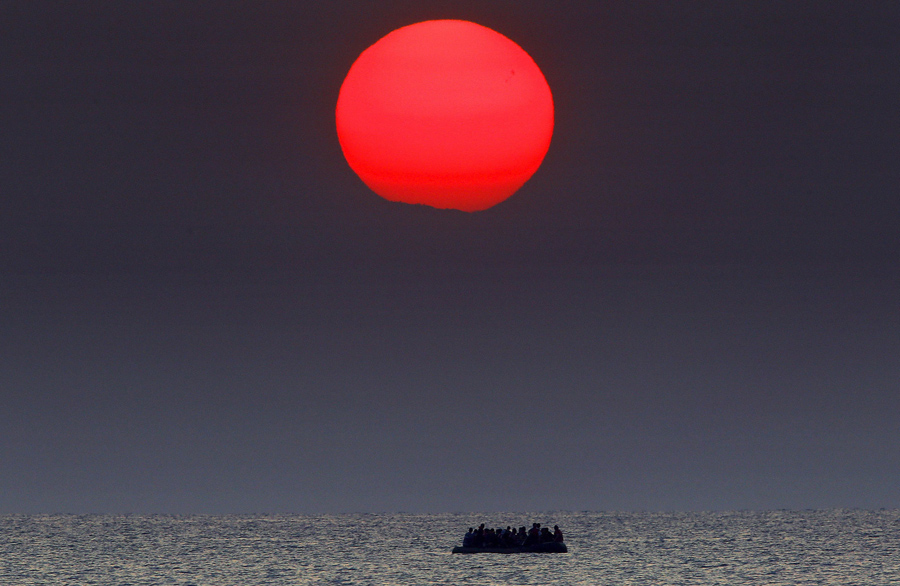

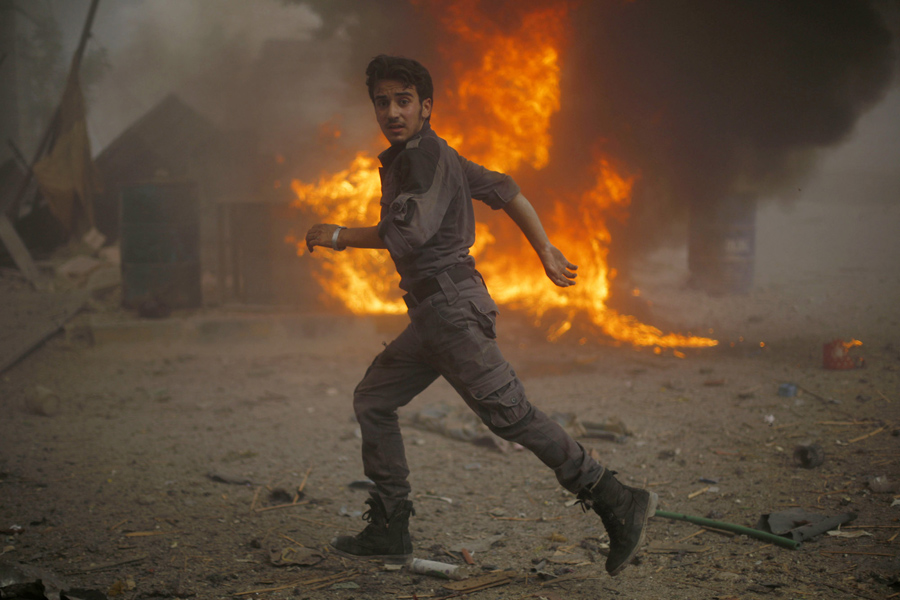

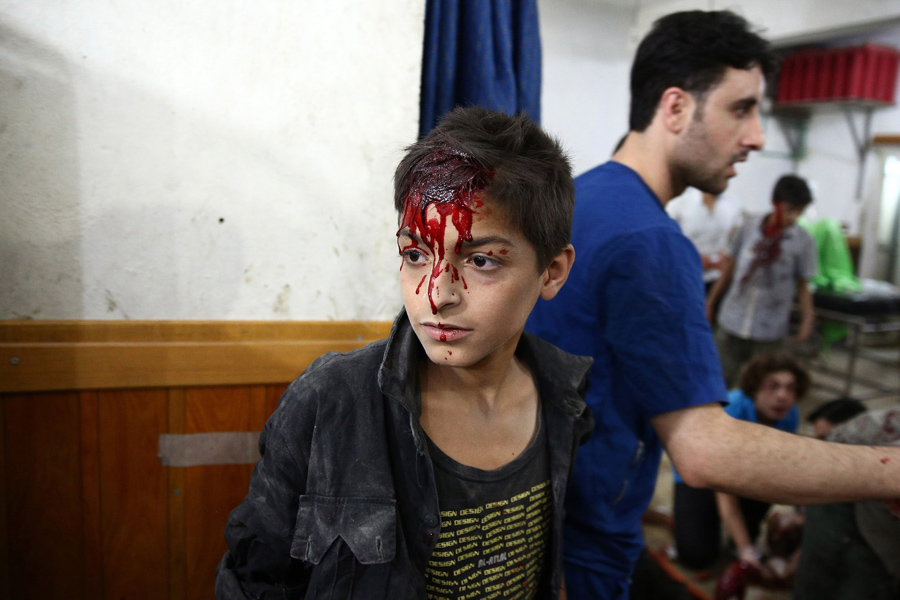
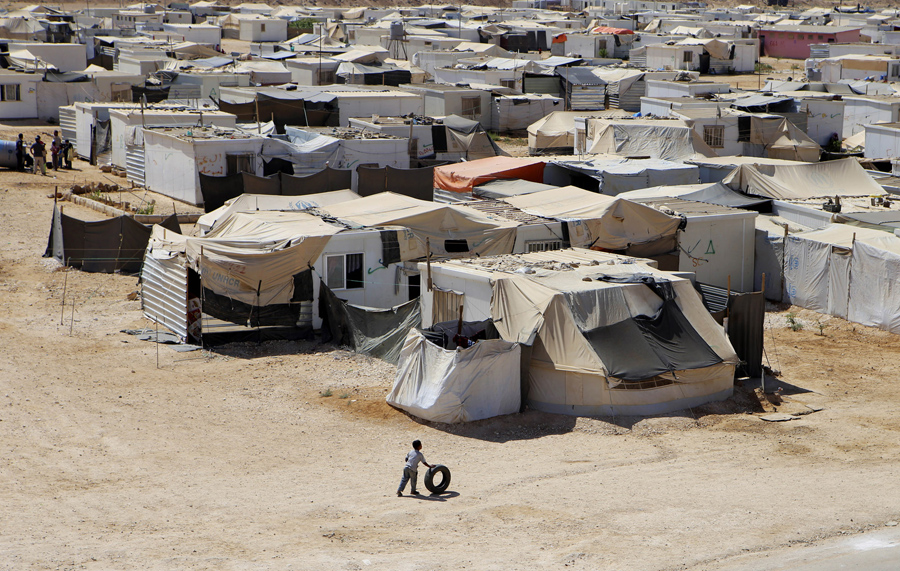
















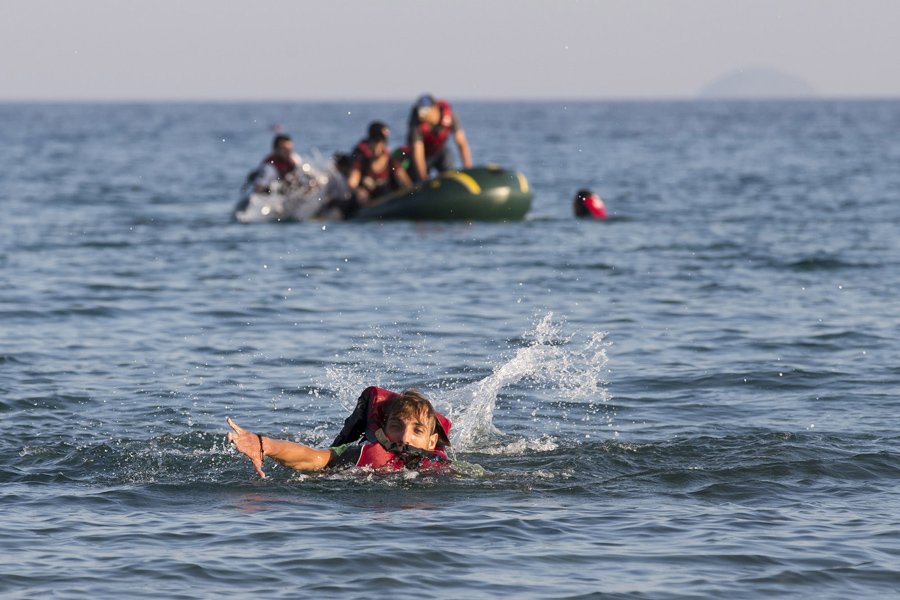

















댓글 없음:
댓글 쓰기